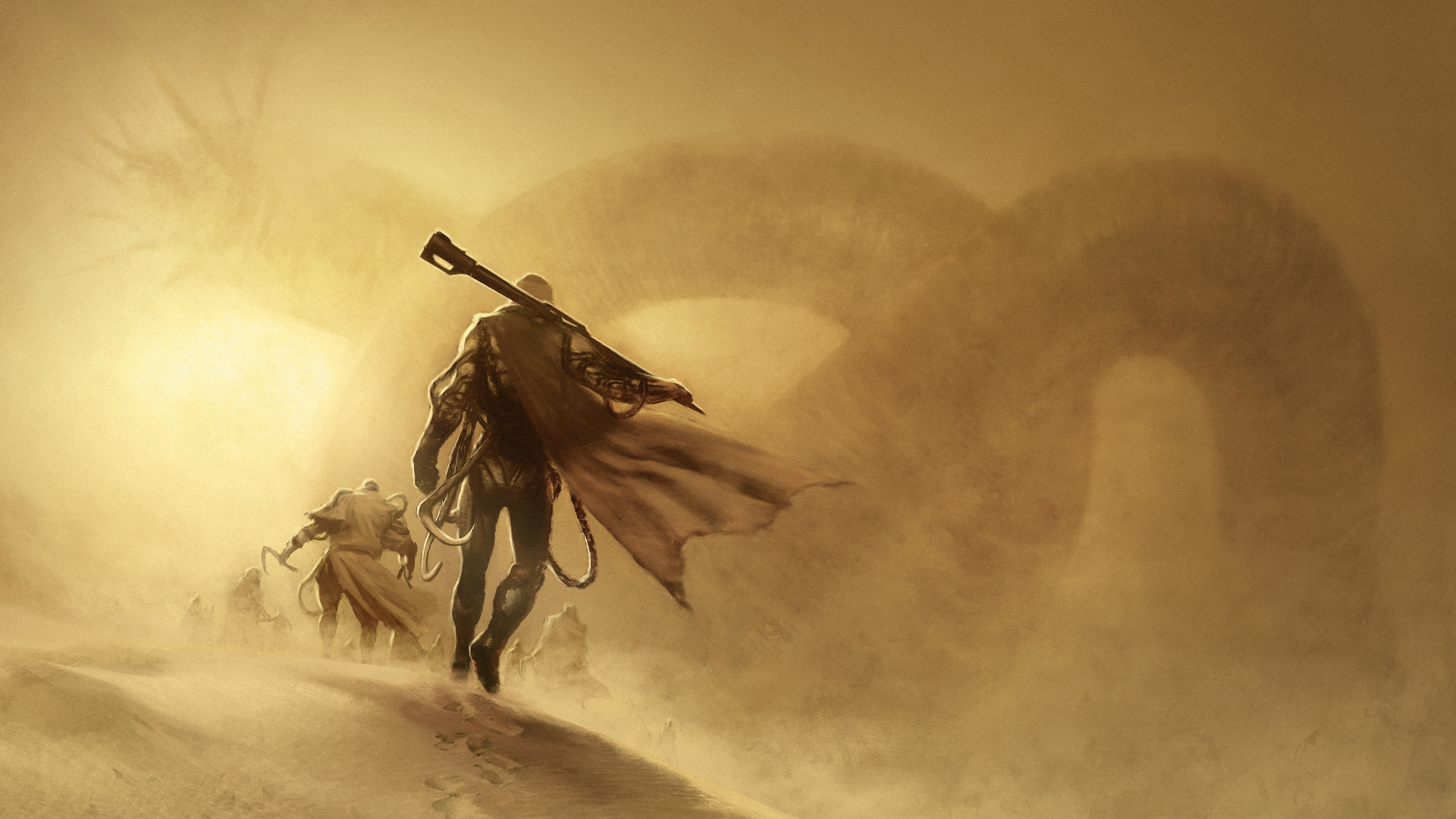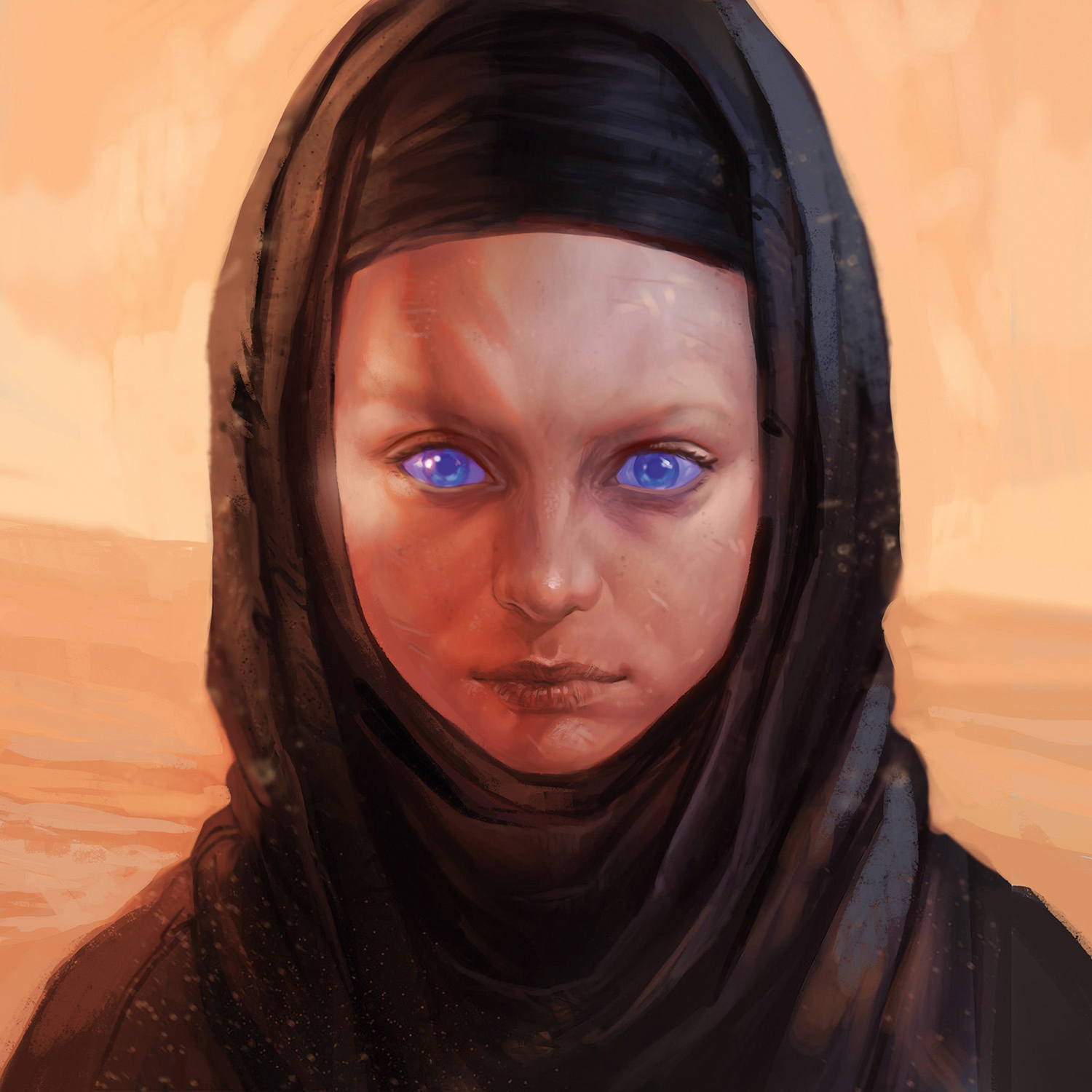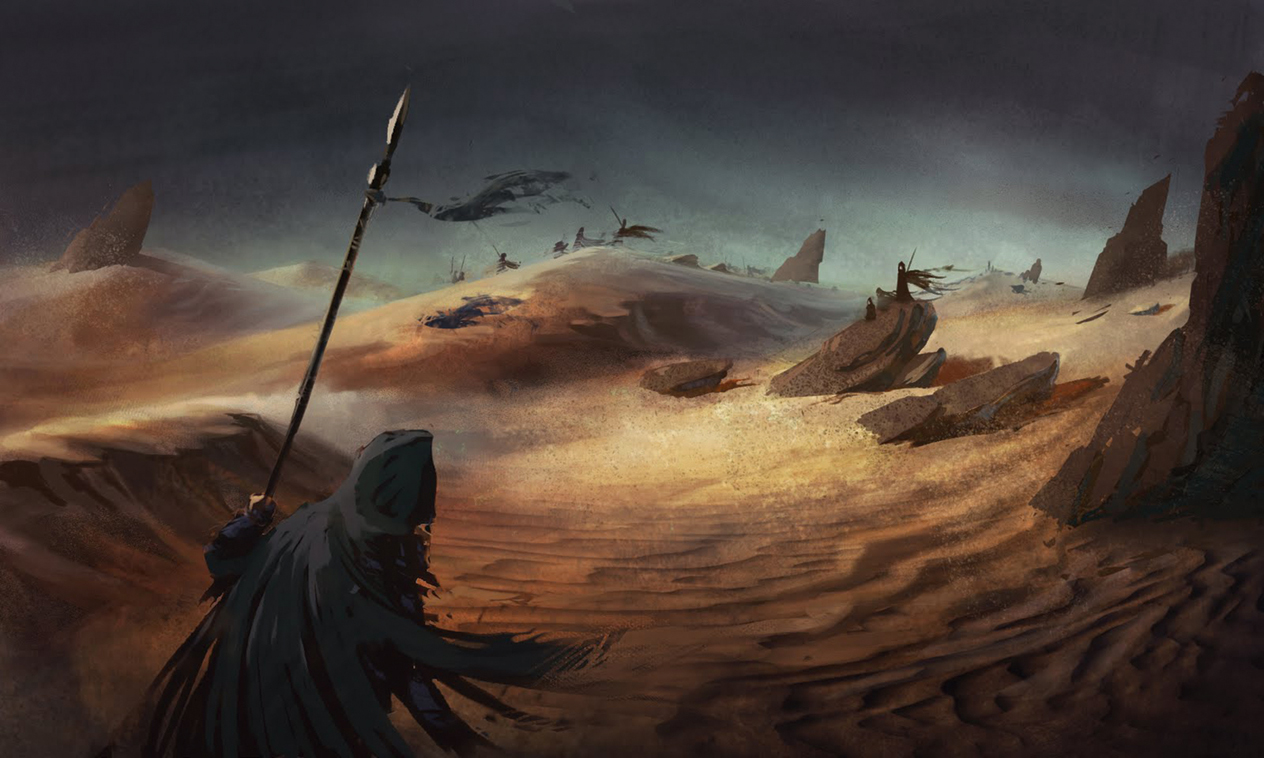How Dune shaped a generation of artists

Back in 1984, a sci-fi movie called Dune, based on a 1965 novel by Frank Herbert, was released… to muted response. It did poorly at the box office, was damned by critics, and director David Lynch disowned it, after being forced into making savage cuts to shorten it.
And yet following the release of the film in 2021, with part two just announced for 2023, Lynch’s ambitious creation has been widely reappraised. You’ll find die-hard fans everywhere, and many artists see it as a big influence on their careers. Alongside the original book, which offers just enough detail to inspire but not enough to swamp the imagination.

“Dune has influenced my art, and the art of many artists,” says Gary Jamroz, a freelance senior concept artist with Gunzilla Games. “Its intricate world building make it easy to get lost in. You have advanced tech. You have space. You have legends and myth. You have royalty, mysticism, medieval references too.”
If you're feeling inspired by the books, films or the work here, then be sure to download Photoshop or one of the other best digital art programmes and get stuck in.
Desert power

Its most iconic images centre around desert landscapes, which helped lure in freelance concept artist Simon Goinard. “My mind works with geometry, and it’s easier to visualise geometry when you paint deserts and angular shapes,” he explains. “This may be why I like Dune so much.”
But there’s more to Dune than sand. “The costume design is what really opened my eyes, not only to a possible career opportunity in concept art, but also to the idea of functional design,” recalls Bruno Gauthier Leblanc, an art director at Eidos Montreal.

“The design of the Freman stillsuit [a full body suit worn in the open desert] is a perfect example of function blending seamlessly with aesthetics. Every piece of the design has a purpose; it can be mechanical, cultural or even personal to the character, but nothing is done without a reason. This design philosophy has influenced my entire career as a concept artist, and what I try to instil in my team as an art director.”
Daily design news, reviews, how-tos and more, as picked by the editors.
Then there were those giant sandworms. “Back then, movies knew how to build tension, without showing the full creature right away,” enthuses Jordan Lamarre-Wan, lead concept artist on Star Wars Jedi: Fallen Order. “In Dune, the sheer size of the sandworm was so impactful; it really helped to create a ‘David vs Goliath’ underdog relationship. In the same way [in Star Wars], the endless Star Destroyer intro helps to emphasise the size of the emperor’s power, and therefore the protagonist’s challenge.”
Practical appeal

“Dune is one of many movies that’s left an influence on my art, by developing a love for older sci-fi and an appreciation for practical sets over CG,” Lamarre-Wan adds. “Dune [1984] has plenty of great practical sets, props and costumes, and it’s an inspiring example of what great work can be achieved within the boundaries of creative limitations and film production budgets.”
Some artists first came to Dune through other routes than the movie, such as the video games or the Marvel Comics. For Devon Cady-Lee, visual development artist at Warner Bros. Entertainment, it was the original books. “This was the first time I found a sci-fi universe with the same depth and breadth of the fantasy novels I’d been reading,” he recalls. “The way they touch on politics, religion and culture struck a real chord.”
They proved key to developing himself as an artist. “Making artwork based on Dune taught me how to interpret source material,” Cady-Lee says. “In some ways, the books offered a huge amount of information, and in other aspects very little. So I learned how to adapt book descriptions into designs, as well as taking liberties with the material and making inferences.”
Internal art library

Maria Trepalina,a freelance concept artist working in the games industry, also discovered Dune through the novels. “It greatly enriched my ‘internal art library’ that helps you come up with complex, thoughtful images,” she recalls. “Later I watched the movie, and was amazed by the combination of sci-fi and fantasy, and unusual costume designs. I was hooked by the elements of mentality, aesthetics, and designs from the Middle East, Japan, and China.
“These elements are organically woven into the design of the costumes, the environment, and the traditions shown in the book and film. Dune shows how the concept of development can be applied as an example for creating designs for other civilisations, and teaches us to create something new based on existing ones.”
Even if you’ve never seen Dune, you’ve probably been influenced by it indirectly, because it shaped so many other films. “Take Tremors, a movie that more helped shape my love of drawing monsters,” says Henrik Sahlström, a senior concept artist at Ubisoft. “The whole sandworm thing is blatantly pulled from Dune. Plus, how much did Sting appearing in Dune influence or inspire Hellblazer/John Constantine popping up in DC Vertigo´s Swamp Thing in 1985?”
Dune-inspired art

All of these artists have been driven at some point to create their own Dune-inspired art. “I started illustrating Dune as a pitch vis test around 2014, because the IP was a bit under-represented at the time, and I thought it deserved more than that,” says Simon. “It was also pretty clear that most of the art circulating around the internet was based on the film’s aesthetic, and not representative of the books’ mood and poetry.”
“My main idea for those small pictures was to bring back this particular feeling that rise from Herbert’s descriptions,” he adds. “The struggle for life. The bone-crushing desert wind. The strong female warriors. The blue and the red.”

For anyone inspired to create their own Dune art, Gary offers this advice. “If you want to portray people living in the desert correctly, you have to take references of what we have already have. Study it, understand it, be curious about it. This will save you in the long run. Knowing what you are designing and why you took those choices will make all the difference.”
This article originally appeared in ImagineFX magazine. Subscribe to ImagineFX via Magazines Direct.

Ian Dean is Editor, Digital Arts & 3D at Creative Bloq, and the former editor of many leading magazines. These titles included ImagineFX, 3D World and video game titles Play and Official PlayStation Magazine. Ian launched Xbox magazine X360 and edited PlayStation World. For Creative Bloq, Ian combines his experiences to bring the latest news on digital art, VFX and video games and tech, and in his spare time he doodles in Procreate, ArtRage, and Rebelle while finding time to play Xbox and PS5.
